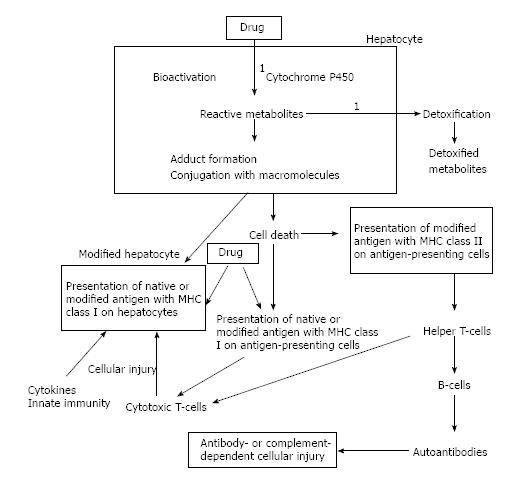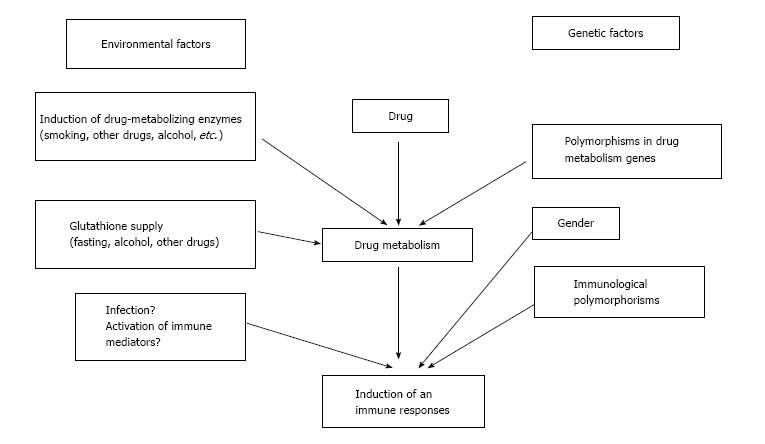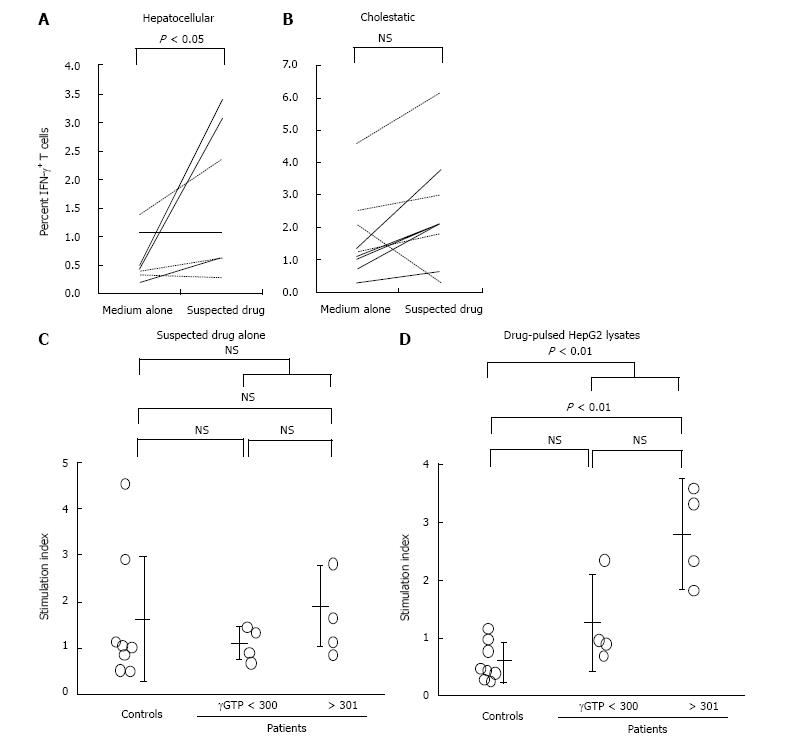Copyright
©2014 Baishideng Publishing Group Inc.
World J Immunol. Nov 27, 2014; 4(3): 149-157
Published online Nov 27, 2014. doi: 10.5411/wji.v4.i3.149
Published online Nov 27, 2014. doi: 10.5411/wji.v4.i3.149
Figure 1 Hypothetical schema of the immunological pathogenesis of drug induced liver injury (ref.
[5] with modifications). 1Genetic polymorphism.
Figure 2 Contribution of environmental and genetic factors to drug metabolism and immune response in drug induced liver injury[30].
Figure 3 Cytokine production by immune cells after stimulation with suspected drug alone or suspected drug-pulsed HepG2 lysates in patients with drug induced liver injury[36].
A, B: The percentages of CD8+ cells that are IFN-γ+ after stimulation with the suspected drug alone in patients with hepatocellular type (A) and cholestatic type (B) liver injury; C, D: Fold expansions of TNF-α+ cells (stimulation index) in CD14+ cells after stimulation with untreated HepG2 lysates (C) or the suspected drug-pulsed HepG2 lysates (D) in patients with cholestatic type liver injury. NS: Not significant.
- Citation: Tajiri K, Shimizu Y. Immunological aspects of drug-induced liver injury. World J Immunol 2014; 4(3): 149-157
- URL: https://www.wjgnet.com/2219-2824/full/v4/i3/149.htm
- DOI: https://dx.doi.org/10.5411/wji.v4.i3.149















